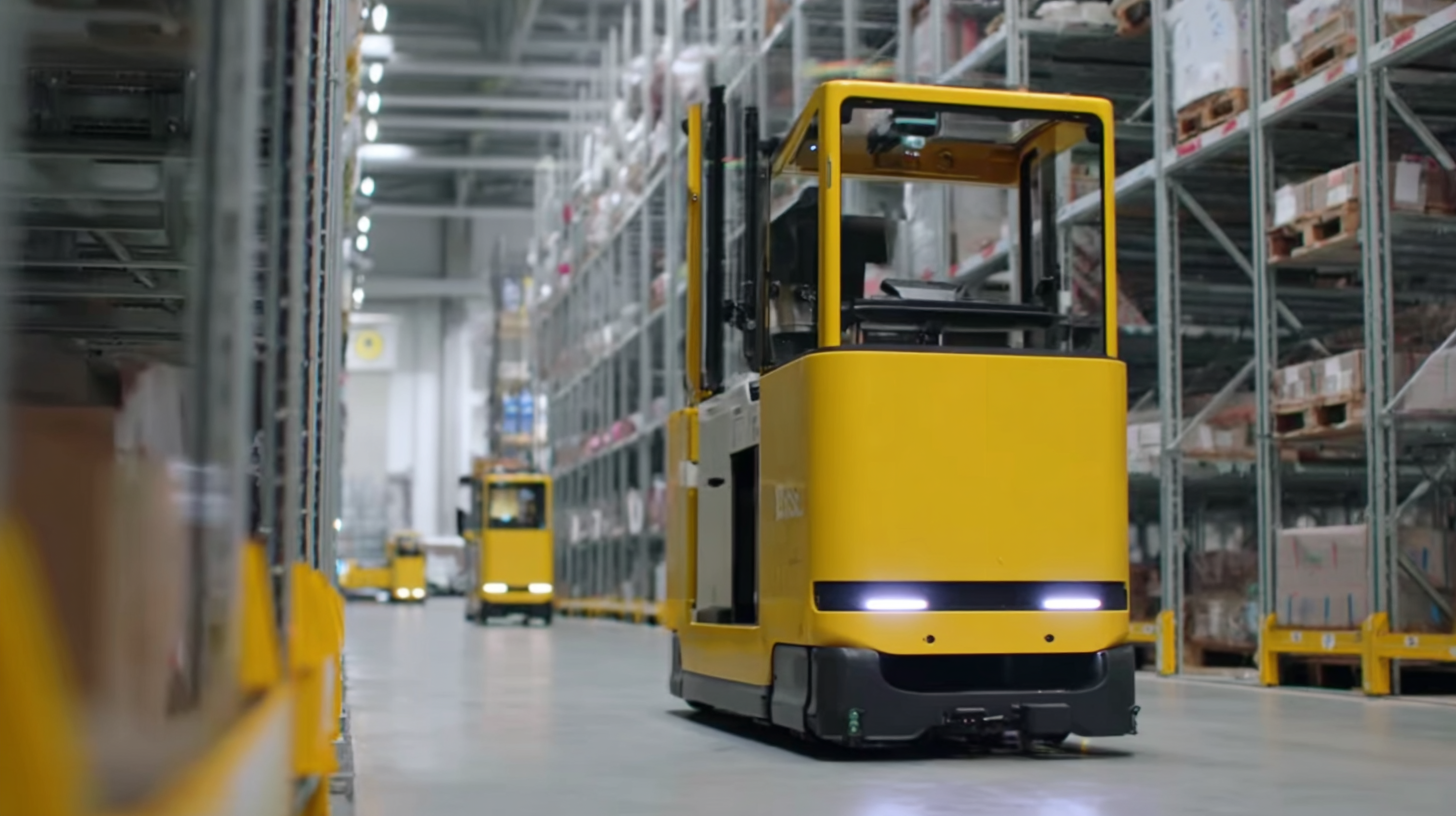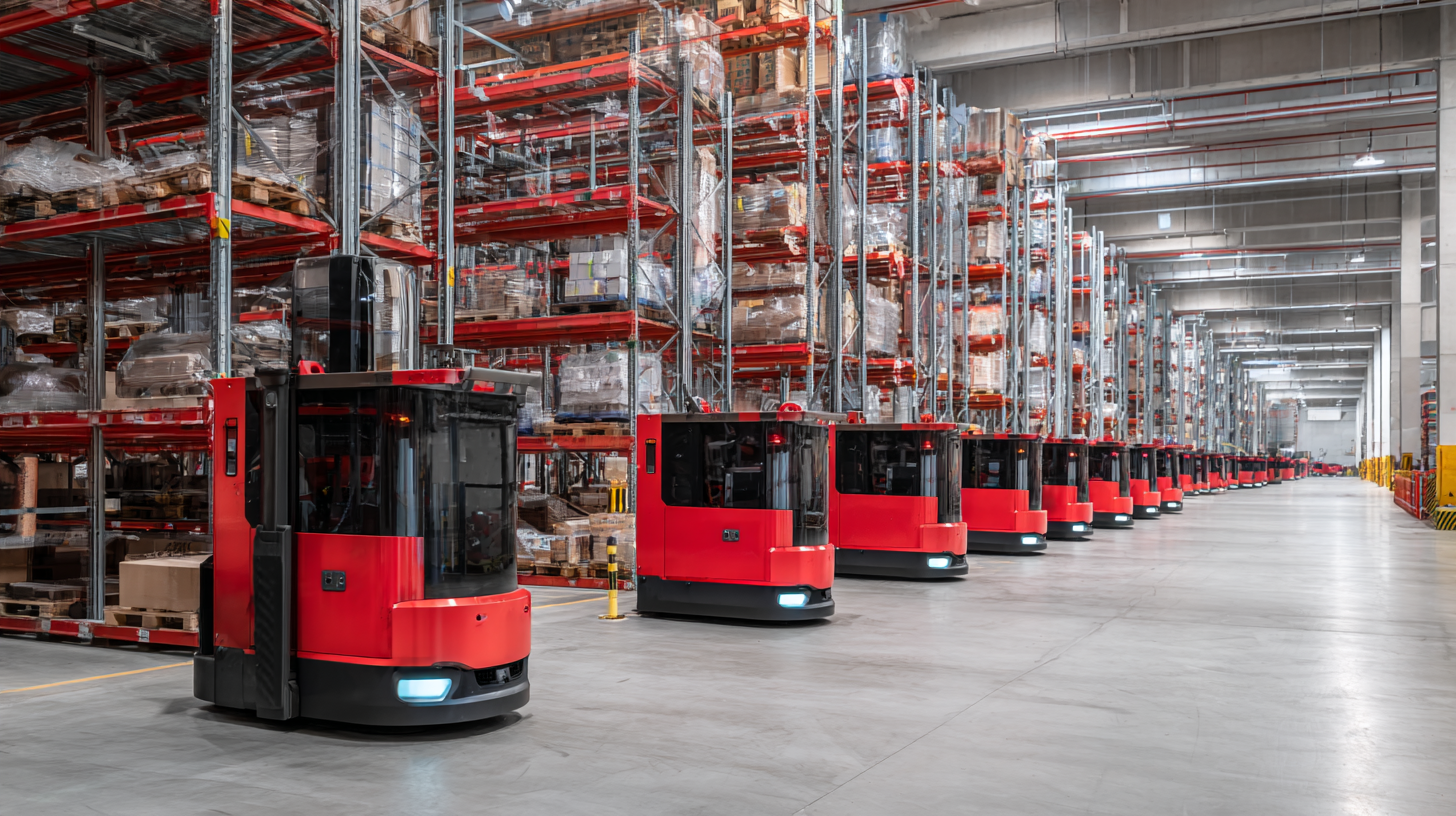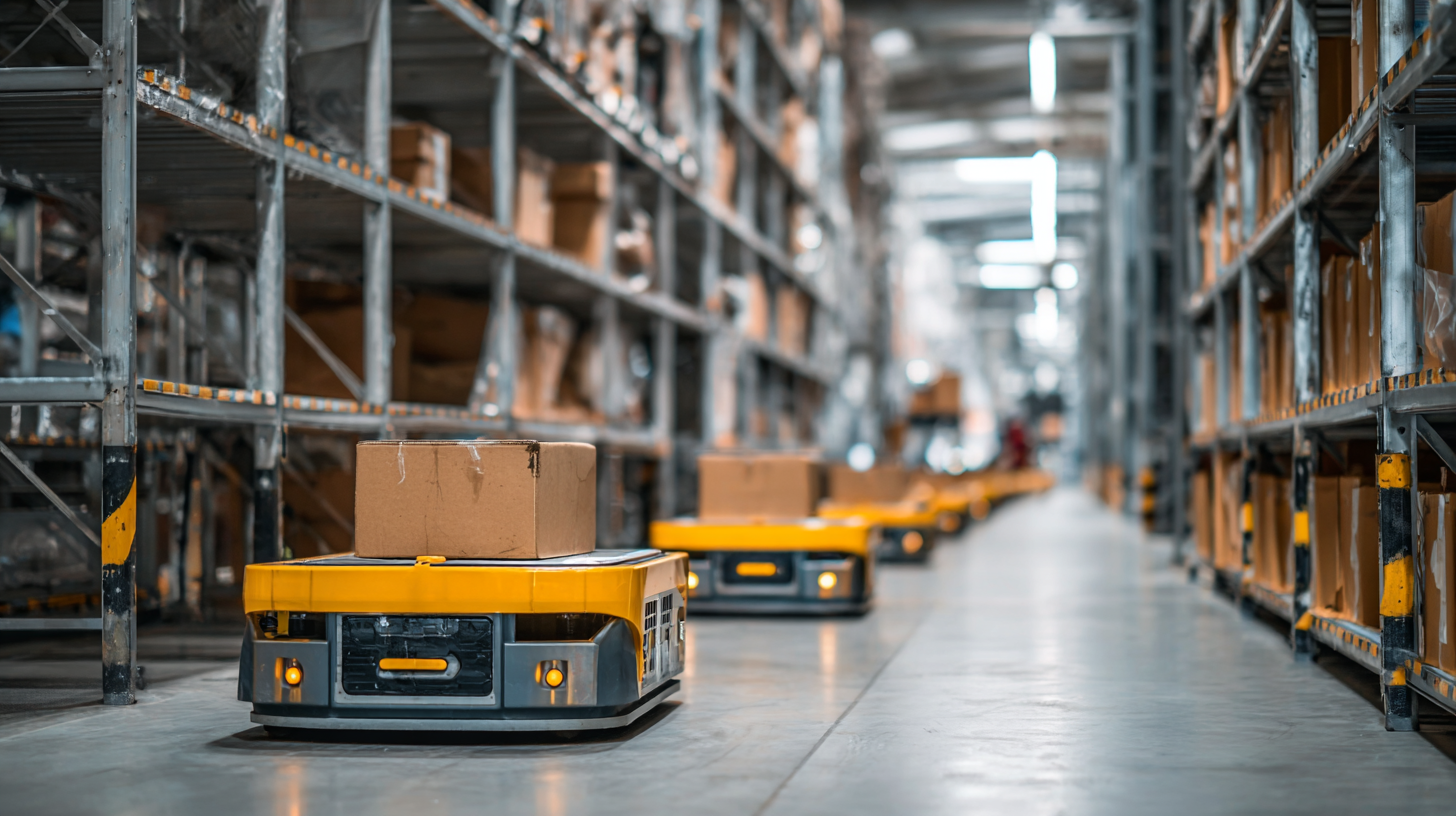

14, Raghava Enclave, Transport Road, Secunderabad, Hyderabad (500009)
©2024 All Rights Reserved by excitechrobot.com
In recent years, the logistics and supply chain industry has witnessed a significant transformation driven by technological advancements, particularly the rise of Autonomous Warehouse Robots. According to a report by McKinsey, automation in warehouse operations can enhance productivity by up to 30%, while reducing labor costs by nearly 20%. As e-commerce continues to expand, with the global online sales projected to surpass $6 trillion by 2024 (eMarketer), businesses increasingly rely on automation to meet consumer demand efficiently. These robots streamline operations by executing tasks such as picking, packing, and transporting goods with remarkable precision and speed. This blog will explore the ten best Autonomous Warehouse Robots that are redefining supply chain efficiency, showcasing their industry applications and the substantial benefits they provide to businesses navigating the complexities of modern logistics.

The rise of autonomous warehouse robots is transforming global supply chain efficiency, providing significant benefits in operational cost reduction. According to a report by McKinsey & Company, companies utilizing autonomous mobile robots (AMRs) in their warehousing operations can achieve up to a 30% reduction in overall operational costs. This transformation is largely due to the robots’ ability to perform repetitive tasks with high precision, reducing the need for extensive labor while minimizing errors that can lead to costly delays and restocking issues.
One of the key advantages of these robots is their capacity to operate around the clock, leading to increased productivity without the need for breaks or downtime. This continuous operation enables warehouses to handle larger volumes of goods more effectively. As indicated in a report from Statista, the adoption of warehouse automation has already seen a 20% increase in productivity levels across various sectors. To fully realize these benefits, businesses should focus on integrating advanced analytics and AI-driven decision-making processes with their robotic systems.
Tip: When implementing autonomous systems, ensure proper training for your staff to work alongside robots seamlessly. This enhances collaboration and maximizes the advantages of automation.
Tip: Regularly monitor and analyze the data collected by your robots. This can help identify inefficiencies and areas for further cost reduction, keeping your operations agile and competitive.
The impact of automation on supply chain efficiency is increasingly evident as companies leverage advanced technologies to reduce order fulfillment times significantly. In recent studies, businesses have achieved up to a 50% cut in fulfillment times, directly linking this success to the integration of autonomous warehouse robots. These intelligent systems streamline operations by optimizing inventory management and enhancing logistics processes, resulting in faster delivery and improved customer satisfaction.
Emerging platforms are at the forefront of this transformation, utilizing AI to not only enhance efficiency but also redefine logistics practices. For instance, innovative tools that combine multi-channel order management with intelligent routing have been pivotal in maximizing resource utilization. Companies adopting such technologies are not only minimizing costs but are also generating measurable benefits, evident from numerous case studies showcasing transformations driven by AI.
As the logistics landscape evolves, the synergy between automation and supply chain processes promises to revolutionize how businesses operate and deliver value to their customers.
In today's fast-paced supply chain environment, autonomous warehouse robots are revolutionizing inventory management with remarkable precision. According to a report by the McKinsey Global Institute, the integration of robotics and automation can enhance productivity in warehouses by up to 30% while significantly reducing operational costs. These advancements are crucial as businesses strive to meet increasing consumer demands without sacrificing efficiency.
One standout feature of these autonomous robots is their ability to improve inventory accuracy to an impressive 99.9% precision rate. This exceptional level of accuracy minimizes discrepancies, ultimately reducing the risk of overstock or stockouts. A study from the Automation and Robotics in Construction journal highlights that deploying autonomous robots for inventory tracking can lead to a 25% reduction in labor costs and a striking decrease in inventory errors, which traditionally account for substantial losses in the supply chain. As companies continue to embrace these high-tech solutions, the shift towards automated inventory management is not just a trend; it's becoming a fundamental necessity in maintaining competitive advantage in the global marketplace.
| Robot Model | Precision Rate | Load Capacity (kg) | Operating Speed (m/s) | Battery Life (hours) |
|---|---|---|---|---|
| Model A | 99.9% | 150 | 1.5 | 8 |
| Model B | 99.7% | 200 | 1.2 | 10 |
| Model C | 99.5% | 100 | 1.0 | 12 |
| Model D | 99.8% | 120 | 1.4 | 9 |
| Model E | 99.6% | 130 | 1.3 | 11 |
As global supply chains face unprecedented challenges, the emergence of autonomous warehouse robots has become a game-changer in addressing labor shortages. According to a report by the International Federation of Robotics, the logistics industry is projected to see a labor shortage of 1.3 million workers by 2025. With autonomous robots stepping into the fray, companies are already reporting workforce efficiency improvements by up to 40%. This shift not only enhances productivity but also alleviates the strain of a shrinking labor pool on supply chain operations.

The integration of autonomous technology in warehouses is transforming labor dynamics significantly. A study by McKinsey & Company reveals that automating repetitive tasks can boost overall labor efficiency by 25% to 40%. This is particularly critical in the e-commerce sector, where fulfillment speed is paramount. With autonomous robots handling essential but labor-intensive processes such as inventory management and order picking, human workers can focus on more strategic tasks, creating a leaner and more effective workforce. As the demand for faster turnaround times rises, the role of these robots in transforming global supply chains is becoming increasingly vital.
The autonomous warehouse robot market is poised for remarkable growth, projected to reach a staggering $15 billion by 2025. This surge is driven by advancements in artificial intelligence and robotics, allowing these machines to improve efficiency and reduce operational costs. Companies are increasingly recognizing the value of automation in streamlining their supply chains, leading to improved productivity and faster turnaround times. With the capability to operate around the clock, autonomous robots enhance inventory management and order fulfillment processes, catering to the demands of an evolving global market.
As retailers and logistics providers seek to stay competitive, investing in autonomous warehouse robots becomes imperative. Key innovations, such as enhanced navigation systems and machine learning algorithms, are enabling these robots to work alongside human employees, creating a more harmonious and efficient working environment. The growing acceptance of these automated solutions reflects a broader trend towards digitization in the supply chain sector, indicating a future where technology and human labor complement each other seamlessly. As we move towards 2025, the evolution of autonomous warehouse robots promises not only to transform operational capabilities but also to redefine the landscape of global supply chain management.

